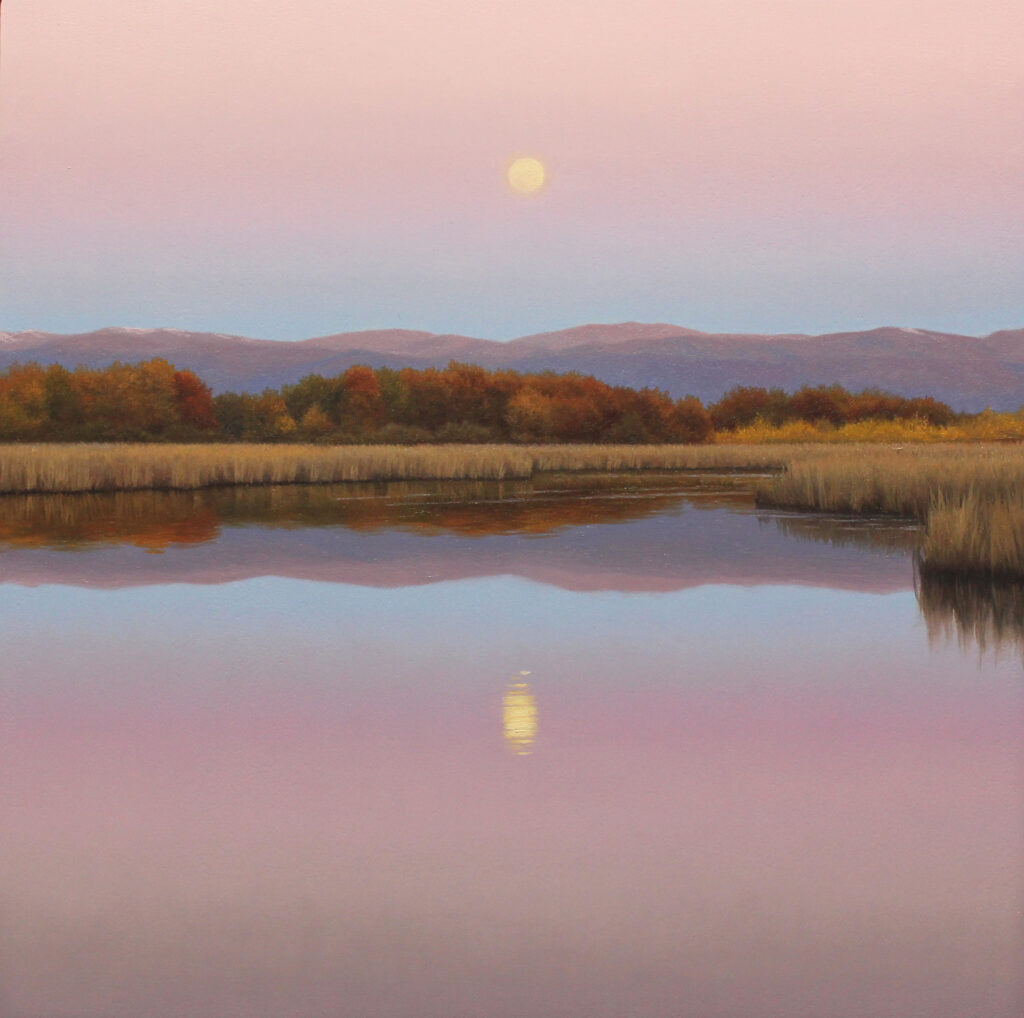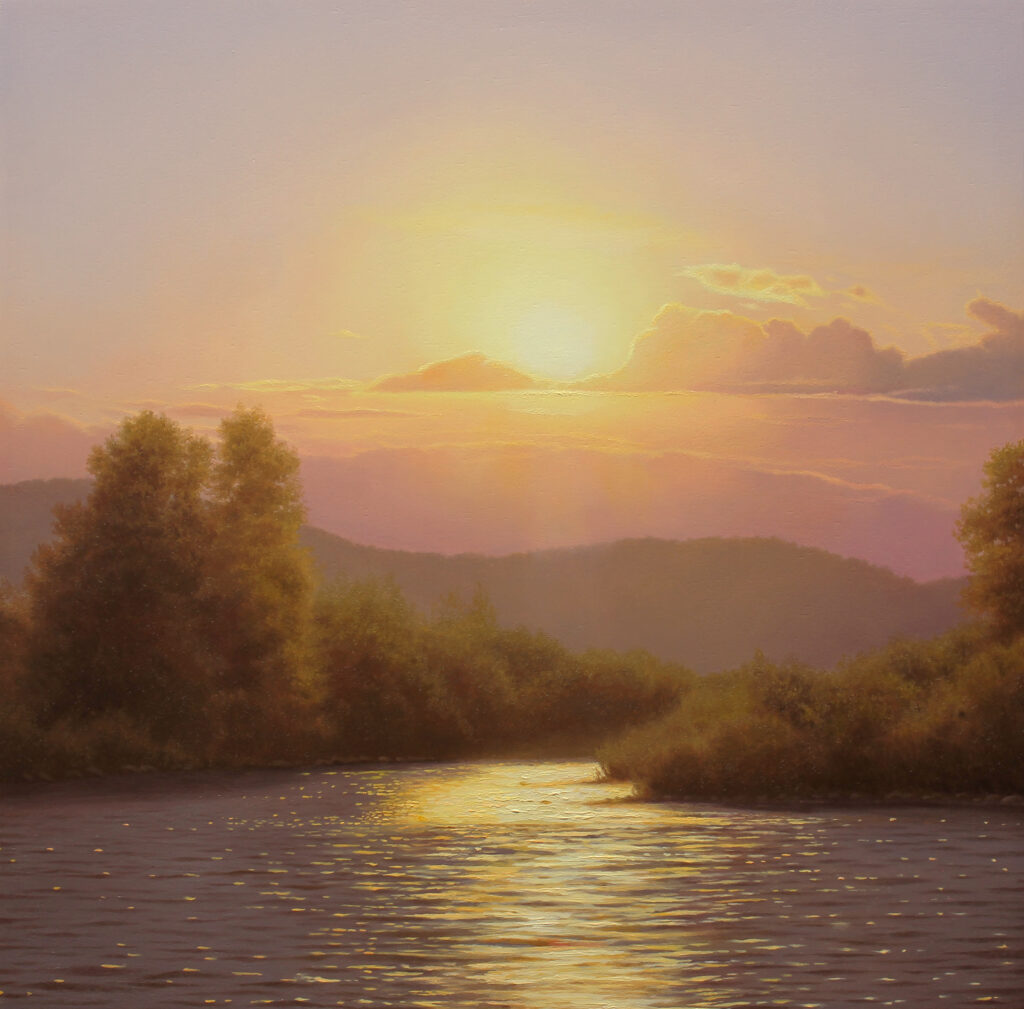
Though many of my paintings feature water in some way, my experience with it feels like it has become largely aesthetic. I’m interested in how water divides the picture into shapes, echoes or reflects the overall color palette and gives a chance for a highlight or contrast. The scene and connection to it matter a lot as well, but if the first concerns aren’t met well enough, then a piece won’t happen.
Painting water is no more difficult than painting anything else, in some ways it may be easier, because our brains can hardly see everything that goes on with the surface of it. Therefore, if you want to simplify it to some degree, it isn’t as noticeable. Like anything, you just have to pay attention to shape, value and color. It’s all drawing in the end.

I am a studio painter for better or worse! I can focus much better in my studio and will take notes and memorize aspects of outdoor life, but I like to work with reference photos in my studio and carefully construct a finished painting over days or weeks.
In terms of balancing realism with emotions of psychological connections — I will change things considerably to create the right mood, and it often goes unnoticed. Sometimes that means changing the overall color scheme of a painting, in other cases, it is transforming the landscape considerably to the point of it no longer looking like the reference. However, it is easier when the reference sources are closer to where I want to be at the start.
Over the years, I have become a better painter, certainly a bit faster in some ways. You learn as you go but ultimately grow within the cage of yourself and you have to live with that and love it.

The collection of paintings that I have in this show are all very sincere western pieces, most of which are views that can be found in the Roaring Fork Valley or in Colorado. Only one combines the east and the west and that is “Autumn Reservoir”, I combined two images of both places into one scene. I think out in Colorado, water matters so much more and is more special than it is here in NY. We have great lakes in any direction and tons of streams, puddles, swamps and humidity. Out there, water is such a wonder break up from the rocky, dry and arid soil. It’s crystal clear, and full of beautiful fish, when I think of Colorado in my memories, it’s standing in the river in summer.